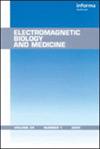静态和极低频电磁场对神经系统的影响
IF 1.6
4区 生物学
Q3 BIOLOGY
引用次数: 2
摘要
本文综述了静态/极低频(ELF)电磁场(EMF)对神经系统的影响。这篇综述主要是对过去二十年进行的研究。有研究表明对多种神经递质有影响,包括NMDA、血清素、多巴胺、内源性阿片类药物等。每一种递质在行为和大脑功能中起着不同的关键作用。对静电/极低频电磁场行为影响的研究证实了这些联系。静态/极低频电磁场诱导的行为和病理效应,如运动活动,记忆和学习缺陷,以及神经系统疾病(阿尔茨海默病,帕金森病,亨廷顿病和热带侧索硬化症等)进行了讨论。静态/极低频电磁场暴露也被证明对某些神经系统疾病的功能缺陷和进展有有益影响。这些电场为这些有害的神经系统疾病提供了一种非侵入性治疗或辅助治疗。结果表明,自由基、活性氧和活性氮可能参与其中。根据暴露条件的不同,可能产生有害或有益的影响。重要的是要进行进一步的调查,以确定这些条件。然而,应谨慎地将实验数据推断为人类接触,因为在大多数实验室研究中使用的现场强度高于环境水平。本文章由计算机程序翻译,如有差异,请以英文原文为准。
Neurological effects of static and extremely-low frequency electromagnetic fields
ABSTRACT This is a review of studies on the neurological effects of static/extremely-low frequency (ELF) electromagnetic fields (EMF). The review is mainly on research carried out in the last two decades. There are studies that showed effects on various neurotransmitters, including NMDA, serotonin, dopamine, endogenous opioids, etc. Each of these transmitters plays different critical roles on behavior and brain functions. Studies on behavioral effects of static/ELF EMF bear out these connections. Static/ELF EMF-induced behavorial and pathological effects, such as locomotor activity, memory and learning deficits, and neurological diseases (Alzheimer’s, Parkinson’s disease, Huntinton’s diseases and atropical lateral scleroses, etc.) are discussed. Static/ELF EMF exposure has also been shown to have beneficial effects on functional deficits and progression of some neurological diseases. These fields provide a non-invasive treatment or treatment-adjuvant for these detrimental neurological conditions. Results suggest that free radicals, both reactive oxygen species and reactive nitric species could be involved. Depending on the conditions of exposure, either harmful or beneficial effects could result. It is important to carry out further investigation to identify these conditions. However, Caution should be taken to extrapolate the experimental data to human exposure, since higher field intensites than environmental levels were used in most laboratory research.
求助全文
通过发布文献求助,成功后即可免费获取论文全文。
去求助
来源期刊
CiteScore
3.60
自引率
11.80%
发文量
33
审稿时长
>12 weeks
期刊介绍:
Aims & Scope: Electromagnetic Biology and Medicine, publishes peer-reviewed research articles on the biological effects and medical applications of non-ionizing electromagnetic fields (from extremely-low frequency to radiofrequency). Topic examples include in vitro and in vivo studies, epidemiological investigation, mechanism and mode of interaction between non-ionizing electromagnetic fields and biological systems. In addition to publishing original articles, the journal also publishes meeting summaries and reports, and reviews on selected topics.

 求助内容:
求助内容: 应助结果提醒方式:
应助结果提醒方式:


